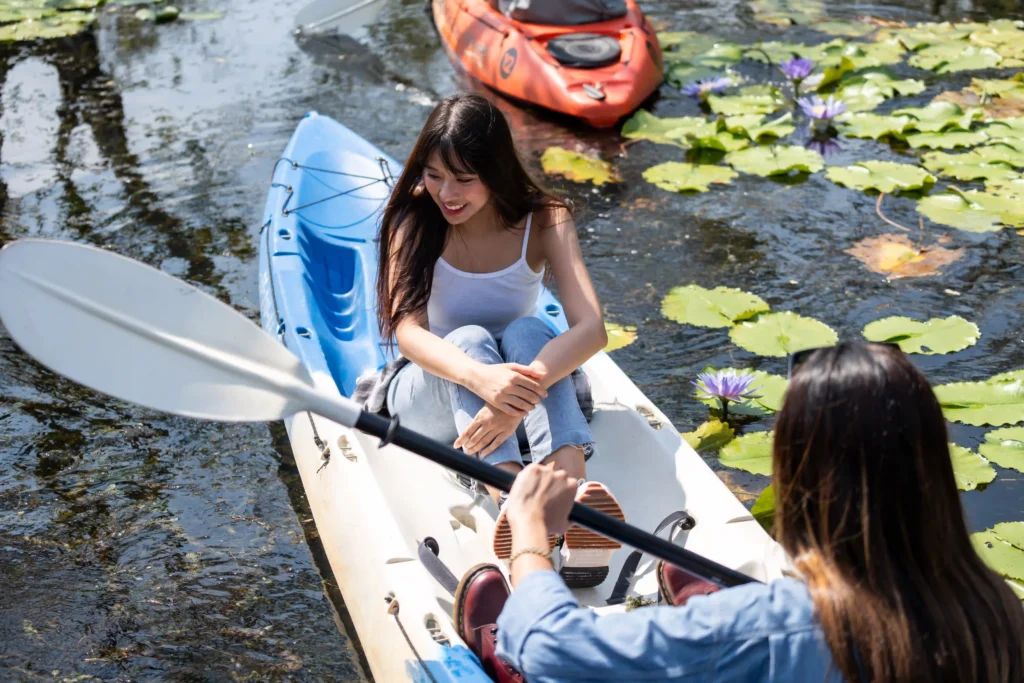Ready to dive into the thrilling world of kayaking? Before you paddle off into the sunset, having the right gear for Kayaking is as crucial as finding a paddle that doesn’t double as a toothpick. In this guide, we’ll steer you through the must-have gear for kayaking every beginner needs. From picking the kayak of your dreams to keeping your equipment shipshape, we’ve got you covered—no life jacket required.
Table of Contents
Choosing the Right Gear for Kayaking
Different Types of Kayaks
Selecting the right kayak is the first step in your kayaking adventure. There are various types of kayaks designed for different purposes:
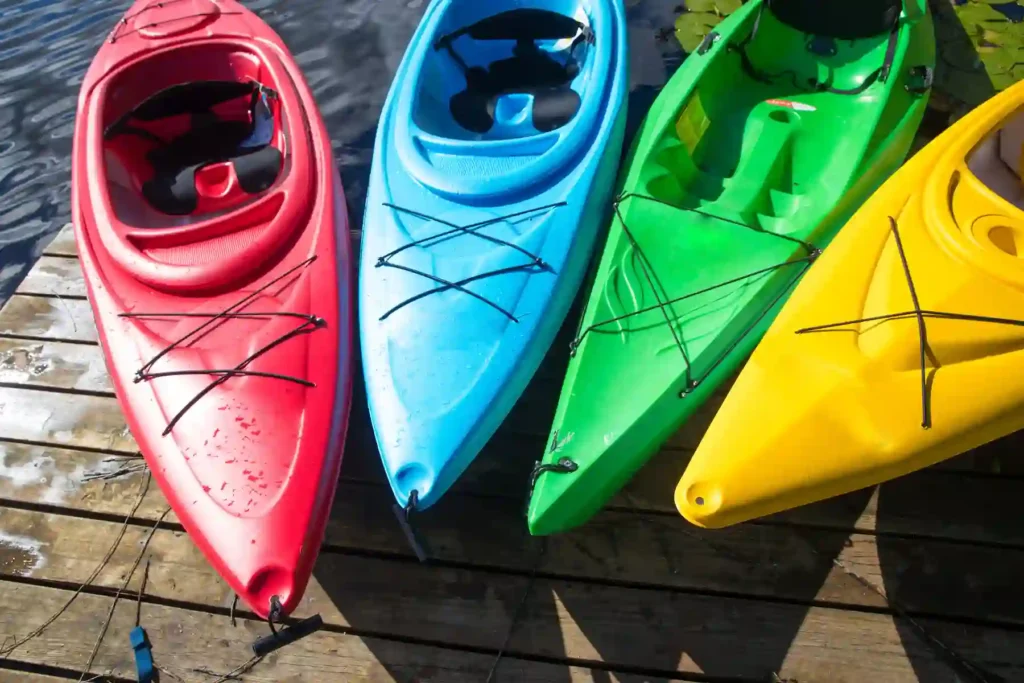
- Recreational Kayaks: Perfect for calm waters like lakes and slow-moving rivers. They are stable, easy to maneuver, and great for beginners.
- Touring Kayaks: Ideal for longer trips and open waters. They offer better tracking and speed, but require a bit more skill to handle.
- Inflatable Kayaks: Convenient for those with limited storage space. They are lightweight and easy to transport, but may not be as durable as hard-shell options.
Factors to Consider When Purchasing or Renting Gear for Kayaking
When choosing a kayak, consider the following factors:
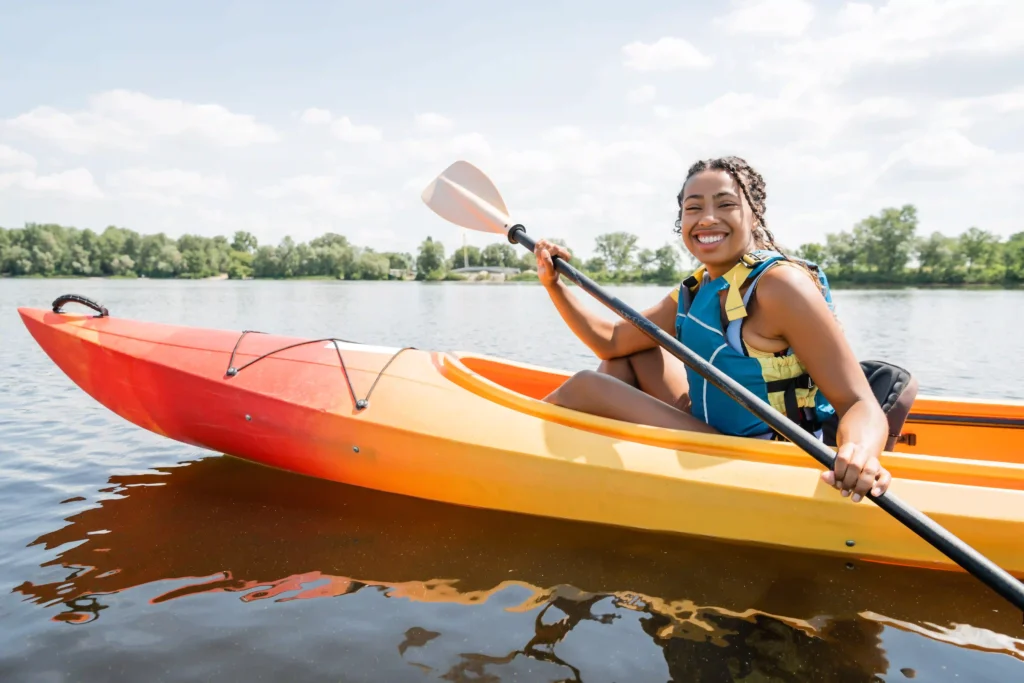
- Skill Level: Beginners should opt for stable and easy-to-maneuver kayaks.
- Water Conditions: Match your kayak to the type of water you’ll be navigating.
- Storage and Transport: Ensure you have adequate space to store and transport your kayak.
- Budget: Price ranges vary, so choose a kayak that fits your budget without compromising on quality.
Must-Have Safety Equipment
Life Jackets, Helmets, and Other Essential Gear for Kayaking
Safety should always be your top priority. Here are the must-have safety equipment items for kayaking:

- Life Jacket (PFD): A well-fitted life jacket is non-negotiable. Look for one that offers comfort, mobility, and meets safety standards.
- Helmet: Essential if you’re kayaking in rough waters or whitewater conditions. Ensure your helmet fits snugly and provides ample protection.
- Whistle: A simple yet crucial piece of safety gear for signaling in case of an emergency.
- First Aid Kit: Keep a compact first aid kit on hand for minor injuries.
Tips for Ensuring Gear is in Good Condition
Regularly inspect your safety gear to ensure it’s in top condition:
- Check for Wear and Tear: Inspect life jackets and helmets for any signs of damage.
- Test Buckles and Straps: Ensure all fastenings are secure and functional.
- Store Properly: Avoid exposing your gear to prolonged sunlight or extreme temperatures, which can degrade materials over time.
Additional Gear for Comfort and Convenience
Paddles, Dry Bags, and Clothing Gear for Kayaking
Enhance your kayaking experience with the right additional gear:
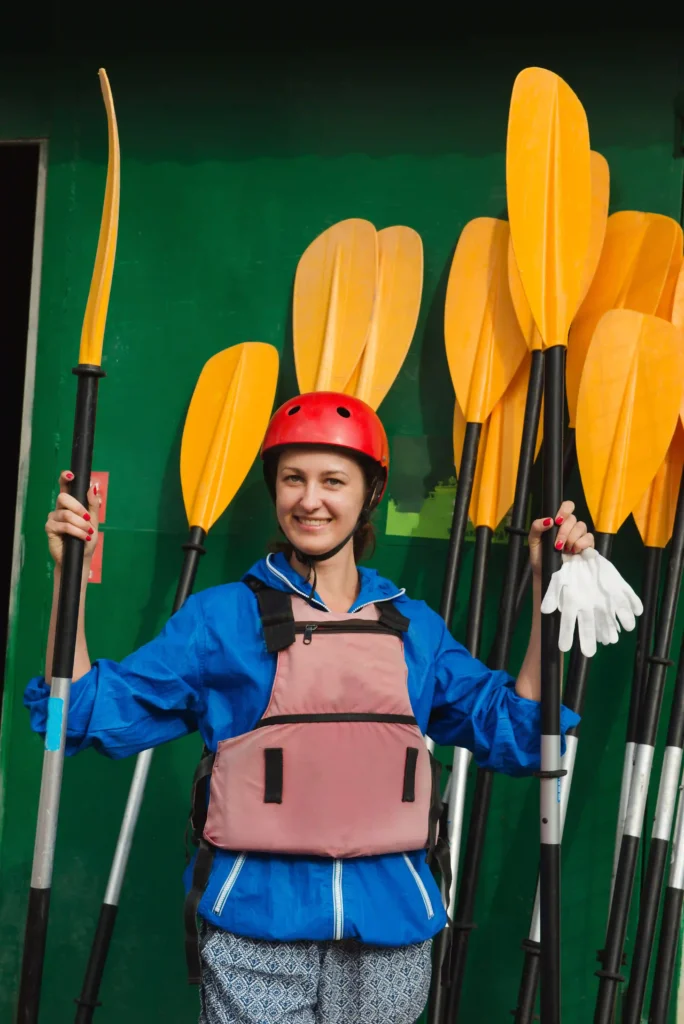
- Paddles: Choose paddles that suit your height and paddling style. Lightweight materials like carbon fiber offer better performance and less fatigue.
- Dry Bags: Keep your belongings safe and dry with waterproof dry bags. They’re perfect for storing essentials like phones, snacks, and extra clothing.
- Clothing: Wear moisture-wicking and quick-drying clothing to stay comfortable. Consider layering for varying weather conditions.
Gadgets and Accessories for Enhancing the Experience
Take your kayaking adventure to the next level with these gadgets and accessories:
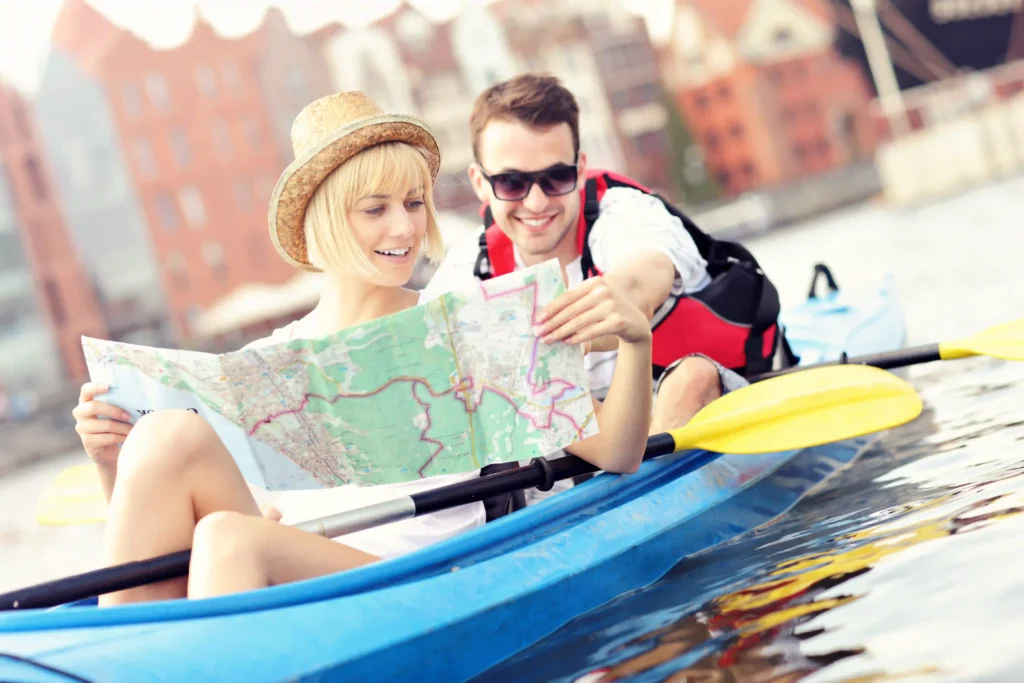
- GPS and Maps: Navigate with ease using GPS devices or waterproof maps.
- Waterproof Camera: Capture stunning moments on the water without worrying about water damage.
- Fishing Gear (if applicable): If you enjoy fishing, consider bringing along a portable fishing rod and tackle.
Maintenance and Care
Regular Maintenance Tips for Longevity for your Gear for Kayaking
Proper maintenance ensures your gear stays in top shape for years to come:
- Rinse After Use: Rinse your kayak and gear with fresh water after each use to remove salt, sand, and debris.
- Inspect Regularly: Check for cracks, leaks, or other damage. Address any issues promptly to prevent further damage.
Proper Storage Techniques of your Gear for Kayaking
Storing your gear correctly can extend its lifespan:
- Store Indoors: Whenever possible, store your kayak indoors to protect it from the elements.
- Use Covers: If outdoor storage is your only option, invest in a quality kayak cover to shield it from UV rays and moisture.
- Hang or Rack: Use wall racks or hangers to keep your kayak off the ground and prevent warping.
Conclusion
Investing in the right kayaking gear is essential for a safe and enjoyable experience. From selecting the perfect kayak to maintaining your equipment, each step plays a crucial role in your kayaking adventure. Take the time to choose quality gear and ensure it’s well-maintained. Ready to start your kayaking journey? Explore our recommended gear and get ready to hit the water with confidence.
FAQ
1. What are the must-have gear items for kayaking?
Essential gear for kayaking includes:
- Kayak
- Paddle
- Personal Flotation Device (PFD)
- Spray skirt (for sit-inside kayaks)
- Appropriate clothing (wetsuit or drysuit depending on conditions)
- Helmet (for whitewater kayaking)
- Dry bag for personal items
- First aid kit
- Whistle for signaling
2. How do I choose the right kayak for my needs?
When selecting gear for kayaking, consider:
- Your skill level (beginner, intermediate, advanced)
- Intended use (recreational, touring, whitewater)
- Body of water (lakes, rivers, ocean)
- Kayak material (plastic, fiberglass, carbon fiber)
- Storage capacity needed
- Budget
Test different kayaks before purchasing to ensure comfort and suitability.
3. What type of paddle is best for kayaking?
The best paddle depends on your kayaking style and physical attributes:
- Length: Generally, taller paddlers need longer paddles
- Material: Options include aluminum (budget-friendly), fiberglass (mid-range), and carbon fiber (lightweight but expensive)
- Blade shape: Low-angle blades for relaxed paddling, high-angle blades for more aggressive strokes
- Feathered vs. matched blades: Feathered reduces wind resistance but requires technique adjustment
4. Is a life jacket necessary for kayaking?
Yes, a Personal Flotation Device (PFD) is crucial gear for kayaking. It’s not only a safety essential but often a legal requirement. Choose a kayak-specific PFD for comfort and mobility. Ensure it’s Coast Guard approved and fits properly.
5. What clothing should I wear for kayaking?
Appropriate clothing is vital gear for kayaking:
- Warm weather: Quick-drying shorts/pants, moisture-wicking shirt, water shoes, hat, sunglasses
- Cold weather: Wetsuit or drysuit, thermal underlayers, neoprene gloves and boots
- Always bring extra layers and a change of clothes
6. Do I need a spray skirt, and what does it do?
A spray skirt is important gear for kayaking in sit-inside kayaks. It prevents water from entering the cockpit, keeping you dry and the kayak buoyant. Essential for rough waters or cold conditions, but optional for calm, warm-water paddling.
7. What safety gear should I always carry while kayaking?
Essential safety gear for kayaking includes:
- PFD (worn at all times)
- Whistle or sound-producing device
- Bilge pump or bailer
- Paddle float
- First aid kit
- Navigation tools (map, compass, or GPS)
- Communication device (waterproof phone case or VHF radio)
- Headlamp or flashlight for low-light conditions
8. How do I transport my kayak safely?
For transporting your kayaking gear:
- Use a roof rack with kayak carriers or J-cradles
- Secure the kayak with cam straps, not bungee cords
- Use bow and stern lines for extra security
- Protect your vehicle and kayak with padding where they contact each other
9. What should I pack in a dry bag for kayaking?
Essential items to pack in a dry bag as part of your gear for kayaking:
- Extra clothing
- First aid kit
- Snacks and water
- Sun protection (sunscreen, lip balm)
- Navigation tools
- Communication devices
- Car keys and wallet
- Emergency shelter (space blanket)
10. How do I maintain my kayaking gear?
To maintain your gear for kayaking:
- Rinse with fresh water after each use, especially after saltwater paddling
- Dry thoroughly before storage
- Store kayak out of direct sunlight
- Check and maintain all moving parts (rudders, foot pegs)
- Inspect your PFD regularly for wear and tear
- Store paddles in a cool, dry place
- Repair any damage promptly to prevent worsening
